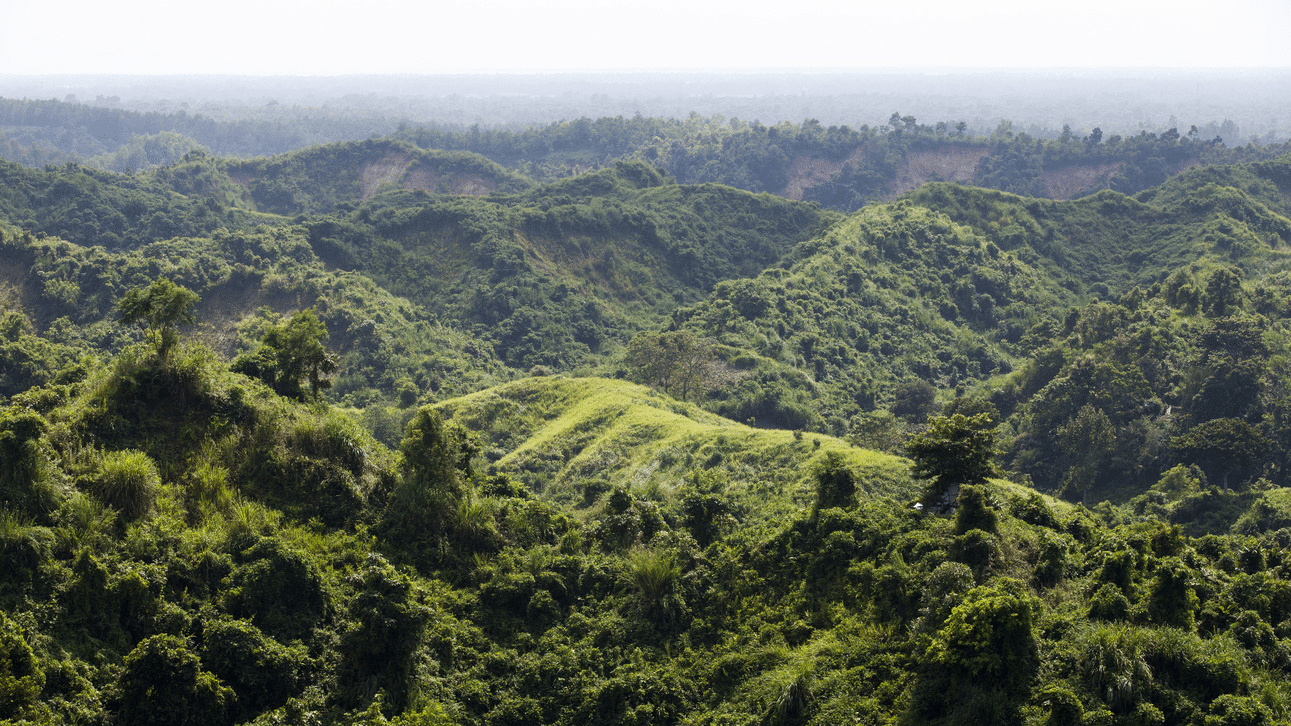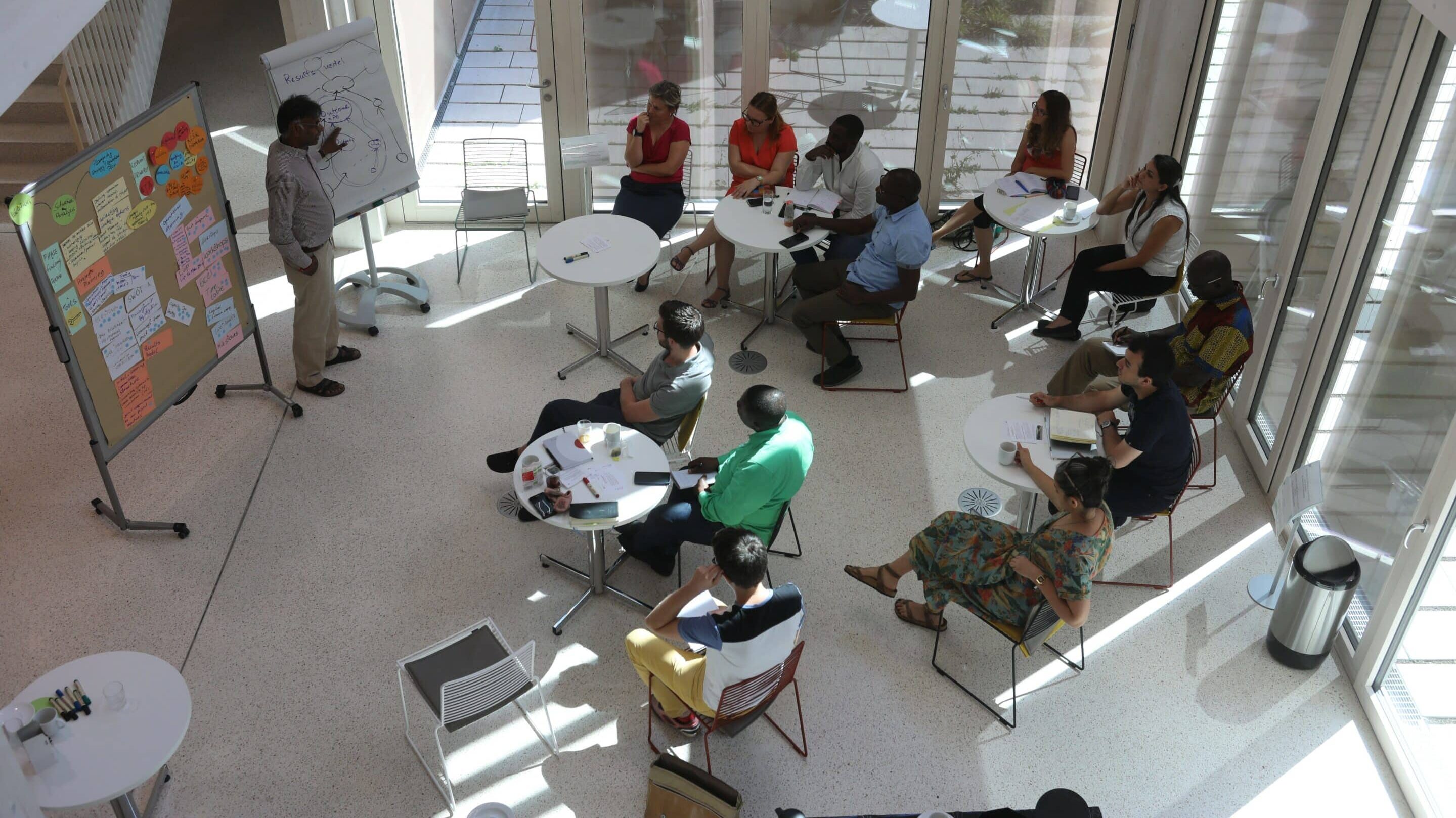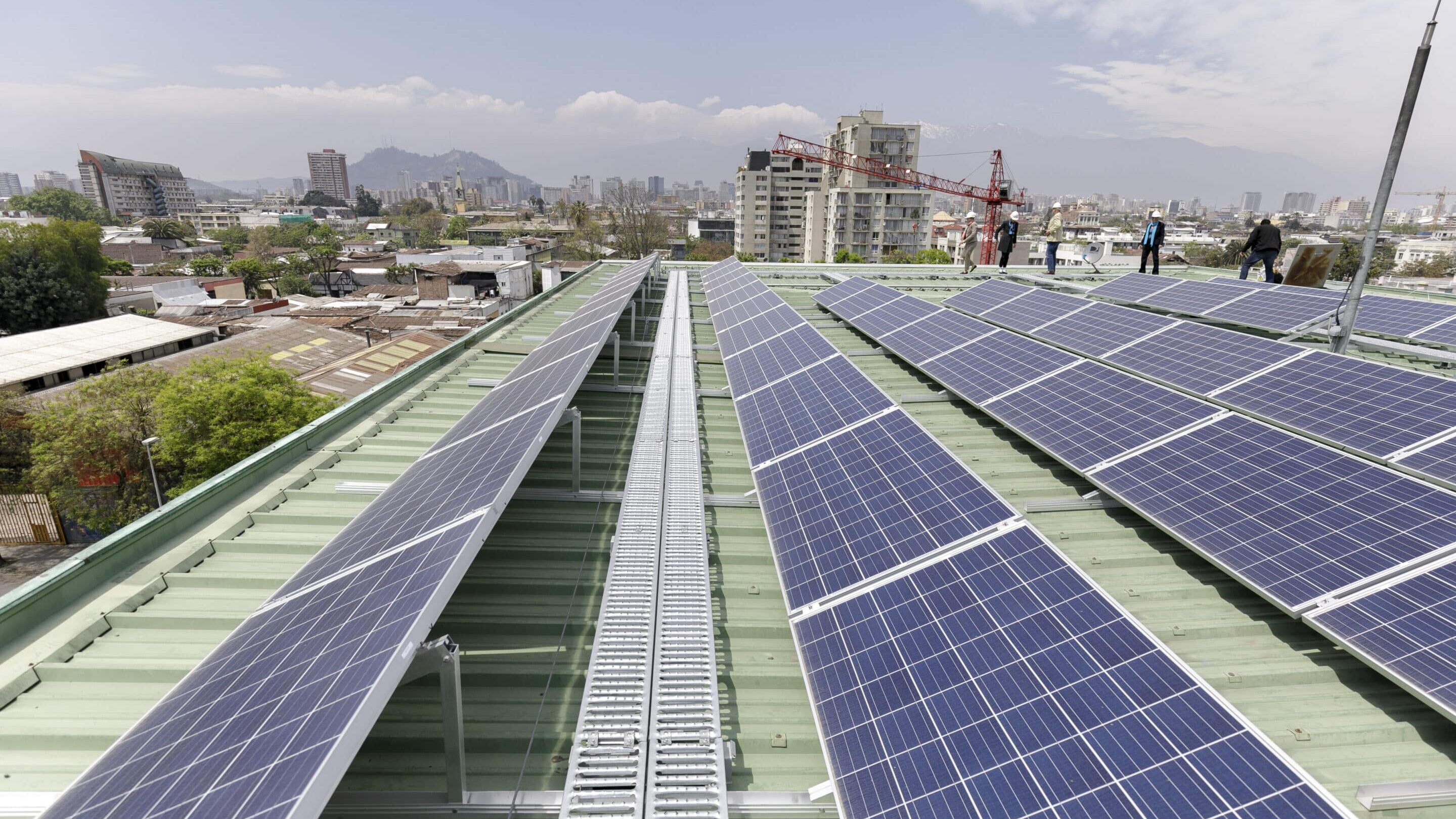Objective and setup of the Financing Structure
To ensure a systematic, coherent and sustained financial protection, the Global Shield Financing Structure serves as one point of entry for countries to receive wide-ranging technical and financial support. The Financing Structure encompasses three complementary vehicles: the Global Shield Solutions Platform (GSSP); the Global Shield Financing Facility (GSFF); and the Climate Vulnerable Forum (CVF) & V20 Joint Multi-Donor Fund.
The Financing Structure can channel financing to implementing organisations, governments, the private sector, NGOs, humanitarian agencies, and other existing Climate and Disaster Risk Finance and Insurance (CDRFI) programmes to address the needs identified in the In-Country Processes and deliver respective country support packages. Coherence and synergies will also be sought with other financing sources and vehicles for maximum impact.
Global Shield Solutions Platform
The Global Shield Solutions Platform (GSSP) is a multi-donor grant facility hosted by the Frankfurt School of Finance & Management gGmbH. As a service and financing platform, the GSSP represents an impartial partner, guiding countries in structuring bespoke, modular support packages needed to address country-specific challenges and provide required funding for their implementation.
Building on its extensive network of CDRFI implementing partners, the GSSP offers countries the advantage of a competitive approach in finding the best-fit solution. It serves as the primary Global Shield financing vehicle to leverage the private sector and cooperate with complementary CDRFI initiatives and programmes.
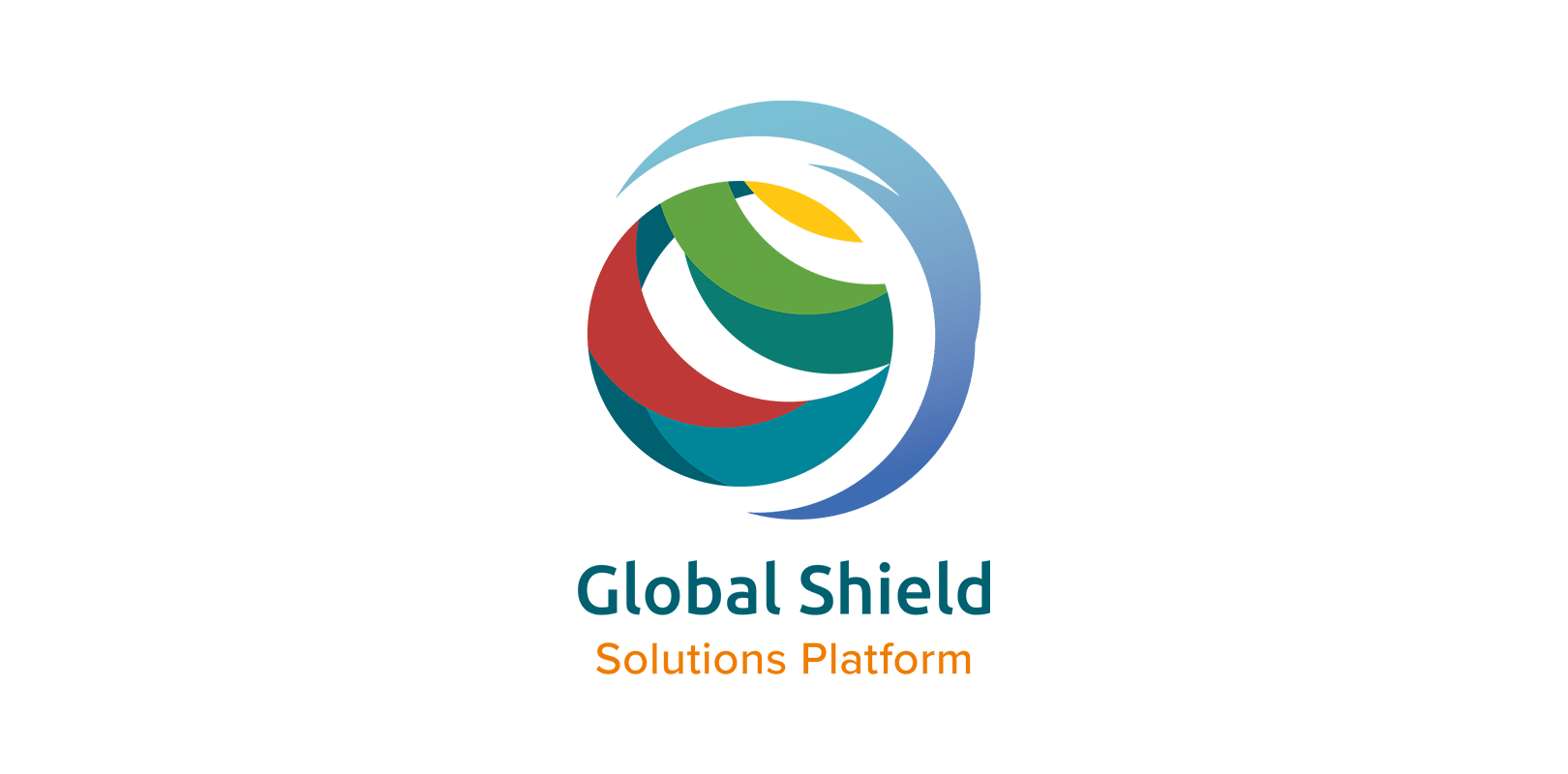
Main purpose
Your Subtitle Goes Here
The GSSP is the primary Global Shield Financing Vehicle to leverage and cooperate with a wide range of complementary private and public Climate and Disaster Risk Finance and Insurance (CDRFI) implementing partners. It aims to support partner countries via the following support windows:
- Country window: addressing needs of Global Shield countries and benefiting from the In-Country Process
- Thematic window: supporting regional and global programmes to improve the cross-country CDRFI architecture (e.g., supporting financing (regional) risk pools or financing global CDRFI programmes)
Eligible countries
Your Subtitle Goes Here
Countries on the Development Assistance Committee (DAC) List of Official Development Assistance (ODA) recipients are eligible.
Eligible funding recipients
Your Subtitle Goes Here
Eligible funding recipients are implementation partners selected by respective Global Shield partner countries, i.e.
- Country Window: governments of Global Shield partner countries
- Thematic Window: eligible applicants to respective thematic window, e.g. (regional) risk pools, national development banks and development agencies
Exclusions: UN Agencies or Multilateral Development Banks (MDBs)
Implementation partners
Your Subtitle Goes Here
Potential implementation partners of the GSSP are local and international public and private sector companies/institutions, humanitarian institutions, academia; a.o. risk pools, bilateral/national development banks, development and technical assistance agencies, CDRFI service providers, impact investment vehicles, CSOs/NGOs, and other CDRFI programmes.
Instruments
Your Subtitle Goes Here
Key instruments of the GSSP include technical advice and grants for a wide range of interventions under three separate but interlinked components:
- Grants for detailed risk analysis and capacity building on risk assessment will be financed in close collaboration and using resources of the Global Risk Modelling Alliance (GRMA).
- Grants for the design and development of CDRFI products and solutions, analyses of legal and regulatory frameworks, and institutional capacities of implementation partners, etc.
- Grants for CDRFI implementation, e.g. delivery mechanisms, premium and capital support, and impartial advisory services.
Administrative set up
Your Subtitle Goes Here
The GSSP is hosted by the Frankfurt School of Finance and Management gGmbh and managed by its CDRFI team. This team also manages the InsuResilience Solutions Fund (ISF) and the Global Risk Modelling Alliance (GRMA), an initiative of the Vulnerable Twenty (V20) Group and the Insurance Development Forum (IDF).
Global Shield Financing Facility
The Global Shield Financing Facility (GSFF) is the reformed Global Risk Financing Facility (GRiF) hosted by the World Bank. It serves as primary Global Shield financing vehicle for projects which can be integrated in ongoing World Bank programmes supporting governments in the area of risk finance, social protection, Disaster Risk Reduction (DRR), market development, and further areas. GSFF can implement funds through World Bank projects and transfer to other selected organisations (accredited Multi-lateral Development Banks (MDBs), Multilateral Funds, and UN Agencies). While the majority of funding will be implemented through World Bank projects, a substantial level of resources will be made available for transfers out to eligible transferees. All projects implemented through the World Bank must be requested by the government and are subject to World Bank government dialogues and World Bank internal approval processes. There is strong commitment for the new financing vehicle to coordinate with other CDRFI stakeholders and also work with other partners through World Bank executed activities.
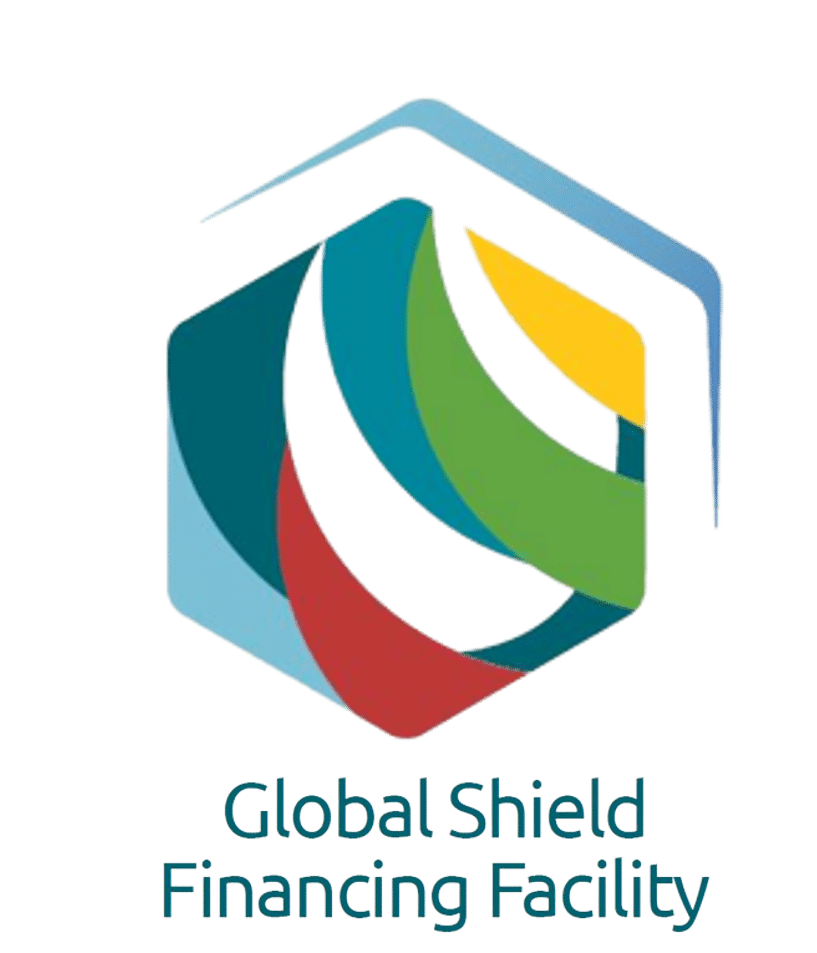
Main purpose
Your Subtitle Goes Here
The GSFF is the primary Global Shield Financing Vehicle for projects which can be integrated in World Bank and transferee eligible Multilateral Development Banks (MDBs) and UN Agency programmes to support governments in developing comprehensive solutions for CDRFI. In addition to programming financing, GSFF will also develop strategic partnerships to:
- Develop global engagements to close the protection gap
- Deepen engagement with humanitarian partners
- Mobilise private risk capital
Eligible countries
Your Subtitle Goes Here
World Bank members, as well as non-members and countries in arrears are eligible (provided Board approval is sought and obtained).
Eligible funding recipients
Your Subtitle Goes Here
Eligible funding recipients are eligible countries listed above and transferee eligible MDBs and UN organizations. The GSFF can provide both Bank-executed, and recipient-executed grants. Recipient-executed grants can be stand-alone and do not necessarily need to be combined with IDA/IBRD lending.
Implementation partners
Your Subtitle Goes Here
Potential implementation partners include partners of World Bank financed projects as by project design, i.e. national governments and other development actors such as NGOs and risk pools, as well as the private sector.
Organizations eligible for Transfer Outs are MDBs and UN organizations. Projects must then follow the policies of the respective agency.
Instruments
Your Subtitle Goes Here
Key instruments of the GSFF include technical assistance and grants (often in combination with IDA/IBRD lending operations). There is high flexibility in what type of expenditures/activities can be funded (as long as there is an agreement between the government and the World Bank). Based on experience funding has mostly been allocated for:
- Preparation of projects
- Co-financing of CDRFI instruments
- Implementation support
- Linking CDRFI instruments to preparedness systems
- Development of policy
- Public financial management (PFM) reform strategies
Under current rules, some expenditures require co-financing for design and implementation of CDRFI solutions, but these rules can be revisited with the GSFF Steering Committee.
Administrative set up
Your Subtitle Goes Here
The GSFF is administered by the World Bank and managed by the GSFF PMT (also known as the “GSFF Secretariat”, with the Global Facility for Disaster Reduction and Recovery (GFDRR) as the trust fund manager and the global Finance, Competitivenes & Innovation (FCI) Crisis and Disaster Risk Finance team as technical manager).
CVF & V20 Joint Multi-Donor Fund
The Climate Vulnerable Forum & V20 Joint Multi-Donor Fund (V20JMDF) is a voluntary, multi-stakeholder strategic financial and implementation tool that aims to facilitate coordination among the respective member states of the CVF and V20 Group of the Ministers of Finance of the CVF. The V20JMDF contributors include CVF/V20 members, philanthropies, and advanced economies. In this context, the V20JMDF is established to facilitate the coordination among the respective member states, and to deepen South-South cooperation, with the overall aim of enhancing members’ capacities to deliver on key priorities on climate action.
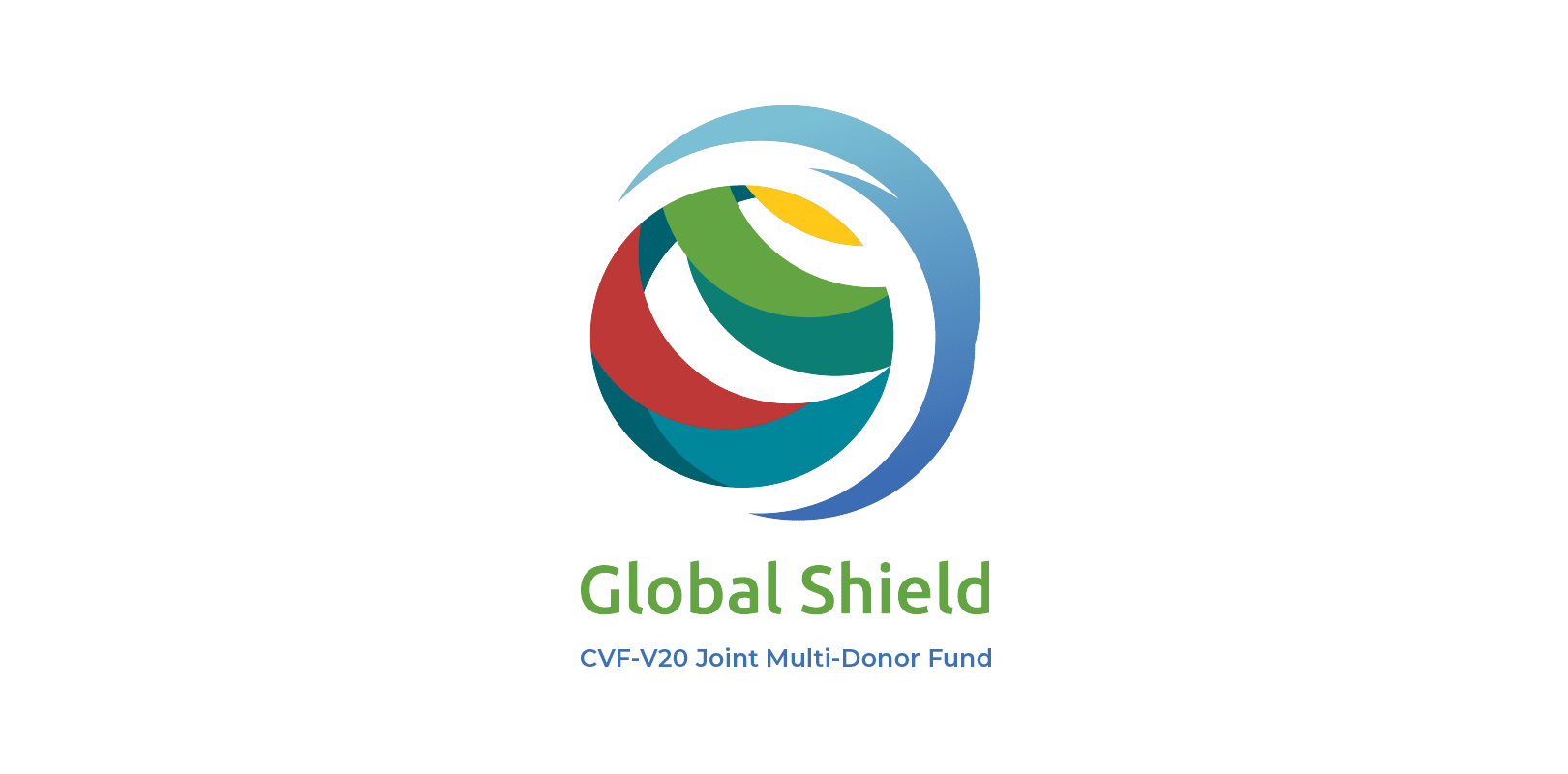
Main purpose
Your Subtitle Goes Here
The Climate Vulnerable Forum (CVF) and the Vulnerable Twenty Group (V20) Joint Multi Donor Fund is the primary Global Shield Financing Vehicle for projects designed by the V20, including (but not limited to) community, enterprise, and ecosystem solutions. These are implemented through selected partners by the CVF/V20 members and the board of the Fund, supporting the country-approved Global Shield Support Package.
Eligible countries
Your Subtitle Goes Here
Eligible countries are the 58 members of the CVF/V20, including countries currently not on the OECD Development Assistance Committee (DAC) List of Official Development Assistance (ODA) recipients.
Eligible funding recipients
Your Subtitle Goes Here
Eligible funding recipients are all pre-selected entities including UN organizations, national entities and NGOs.
Implementation partners
Your Subtitle Goes Here
Potential implementation partners of the V20JMDF are UN organizations, local and international private sector companies, NGOs, humanitarian institutions, academia, national and sub-national governments.
Instruments
Your Subtitle Goes Here
Key instruments of the V20JMDF are grants (in combination with in-kind support from partners), including areas such as:
- Loss and Damage Funding Program (for communities)
- Premium and Capital Support via SMART Principles and its evolution
- Off-balance sheet guarantees to reduce cost of capital (Accelerated Financing Mechanism)
- Slow onset financial protection risk pool (e.g. sea level rise, displacement)
- Distribution Channels Enhancement and Climate Smart Insurance for Micro, Small and Medium-Sized Enterprises (Sustainable Insurance Facility)
Administrative set up
Your Subtitle Goes Here
The V20JMDF is hosted in the United Nations Office for Project Services (UNOPS). The Technical Secretariat is hosted in the CVF/V20 Secretariat.

